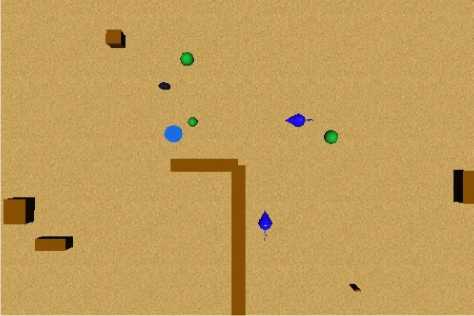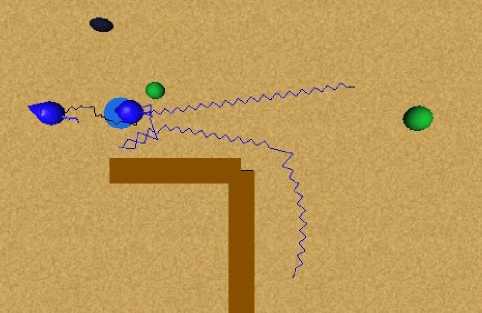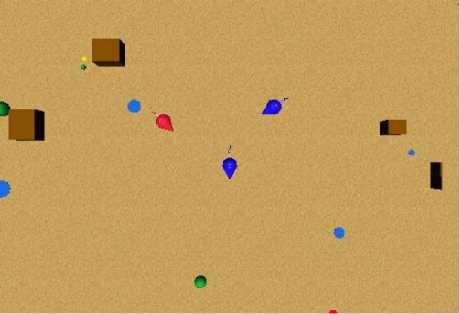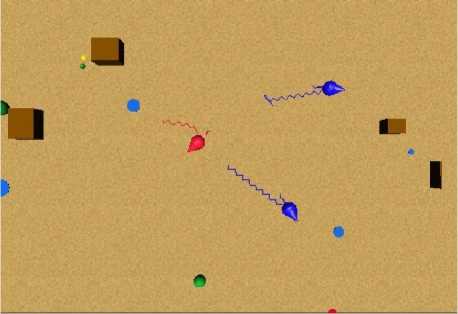
Figure 48. Initial state of the experiment. Figure 49. Behaviours after imitation.

The imitation of behaviours increases the adaptiveness of the animats, and also improves
their chances of survival. For higher values of -, the animats will be more social, and vice versa.
6.2.2. Induction of behaviour
In this experiment, we will test the induction of behaviour, provided by I&I. We have
for the initial state a predator animat, and two prey animats, as seen in Figure 50. One prey is
perceiving the second prey and the predator, while the second prey is not perceiving the
predator nor the first prey. When te simulation begins, the first prey animat begins to run away,
but also induces the second prey to run away. He imitates the induced behaviour because of his
need for safety, and runs away from the predator, as shown in Figure 51.

Figure 50. Initial state of the experiment.

Figure 51 . Prey ani mats runn ing away from a
predator.
The induction of behaviours also increases the adaptiveness in animats. Animats with
a higher value of * will have a higher possibility to induce the rest of the animats. This may lead
to the emergence of social hierarchical structures.
83
More intriguing information
1. EXPANDING HIGHER EDUCATION IN THE U.K: FROM ‘SYSTEM SLOWDOWN’ TO ‘SYSTEM ACCELERATION’2. Unilateral Actions the Case of International Environmental Problems
3. La mobilité de la main-d'œuvre en Europe : le rôle des caractéristiques individuelles et de l'hétérogénéité entre pays
4. Computing optimal sampling designs for two-stage studies
5. Land Police in Mozambique: Future Perspectives
6. The name is absent
7. Food Prices and Overweight Patterns in Italy
8. EU enlargement and environmental policy
9. The name is absent
10. Investment in Next Generation Networks and the Role of Regulation: A Real Option Approach